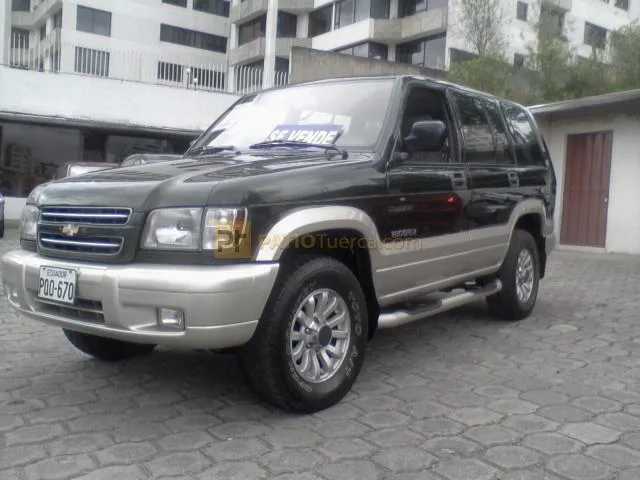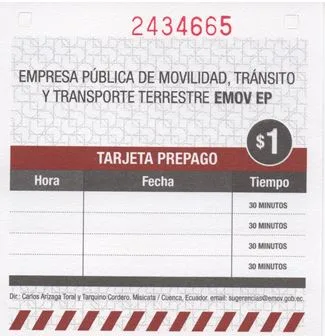Owning a car in Ecuador: licensing, buying, parking, and much more
By Deke Castleman and David Morrill
Although most expats get by without a car in Cuenca, many own one.
You’ll find prices for new cars to be about 20%-30% higher than in the U.S. For used cars, the markup is can be even higher, since most Ecuadorians can’t afford new cars. Also, we’ve observed that Ecuadorians buy cars, same as they do real estate, for investment purposes; they’d rather own a car than keep money in the bank. (This makes perfect sense, by the way, since cars tend to hold their value in Ecuador and, in some cases, actually appreciate.)
In addition, the govt. is once again tightening quotas on new-car imports, which means prices are headed even higher. The new quotas are a reaction to the drop in oil revenue and an attempt to keep dollars in the country. This will have a trickle-down effect of making used cars more expensive. To read about this in more detail (in Spanish), click here.
Inevitably, this leads to the question: Can I ship my car from home? The answer is yes, but the expense (as much as 100% of the value of the vehicle) and the paperwork (it can take months to work through) make it practically prohibitive. Cars aren’t considered a “household good,” the designation for personal items that can be shipped duty-free by new residents. We don’t know a single expat who has ever shipped a car. (If you have, let us know!)
THE DRIVER’S LICENSE
To drive in Ecuador, you need to go through a licensing process that requires you, as of early 2015, to take a driving test and a written exam, in Spanish. There are short-cuts to the process, but they require local contacts; most people go through the training at one of several driver schools around town, which help facilitate the licensing process. The process is supposed to be easier now that management has shifted from the traffic police to the municipal government; the city says it’s even considering allowing the written test to be taken in English. But we’re not holding our breath for either.
The process is in for major changes, the details of which are still developing. Ecuador’s National Assembly passed legislation in December 2014 that eliminates the mandatory driving test, a major blow to driving schools, which are privately owned. Although inexperienced drivers will still be required to take driving tests, these may be administered by a government agency. This is good news for most expats, since their experience of driving back home will probably exempt them from driving school.
Expats Larry and Karen Schunk got their licenses a few years ago. Larry says, “Even if it’s no longer required, going to drivers school is a really good idea. For starters, you get to drive someone else’s car for a week in and around Cuenca, which gives you greater confidence behind the wheel. What they teach at drivers school has nothing at all to do with actual driving in Cuenca, and Ecuador in general, but it’s at least fun to know what the actual rules are.
“At the ANETA drivers school where we went, the written test consisted of 20 questions drawn from a bank of 650 questions in the book you get with the course. Of course, all 650 are in Spanish, so studying them is twofold in purpose: You learn the test and a good bit of Spanish (no extra charge).
“Then you take another test at the Agencia Nacional del Tránsito (ANT) when you actually go to get your license. This one is 20 questions selected randomly from a bank of 103. At the entrance to ANT, for $1 you can purchase a copy of the test bank with all correct answers marked. The actual test is given on a computer in a much different format, but the questions are the ones you purchased outside. The lady who escorts you to a terminal to take the test answers the first question correctly as part of the process of showing you how to take the test, so you only have 19 questions to go. I think you can miss 5 or 6 and still pass. Karen and I both aced it!”
License applicants who are over 65 are required to answer several questions to prove mental competency.
BUYING A CAR
Buying a car in Ecuador is fairly straightforward, though the language barrier, lack of a trustworthy mechanic, slightly different purchase procedures, and possibility of getting scammed can be a bit intimidating. If you buy a stolen car, it’s confiscated. If there are outstanding fines on the car, you have to pay them.
Registration (matrícula) on a newer car can easily be in the $300 to $700 range. Larry and Karen Schunk purchased a new 2012 Prius in Cuenca and their 2014-2015 matrícula was about $400.
Note that liability insurance (known as SOAT) is mandatory. It covers medical expenses in case of an accident; anyone injured in a crash is taken to the nearest medical facility and SOAT covers the costs. It’s quite reasonable, averaging around $50 per year. You can also buy collision insurance, but it’s not required.
SOAT on the Schunk’s Prius is $38 per year, while full-coverage insurance is about $1,400 annually.
Larry recommends full coverage. “It’s a very good idea to have full collision insurance. Your cost if you wreck the car is then limited to the deductible. The better body and paint shops, such as the one at the Toyota service center, will collect from the insurance company for you. The Toyota shop is excellent; the mechanics are extremely well-equipped and well-trained to make repairs correctly. When you walk in, you think you’re in a Toyota shop in the U.S.”
Larry adds that if you buy a new car, the dealer does all the paperwork, attending to the initial matrícula, SOAT, etc. Also, with a new car, you know there are no issues with ownership, fines, and the like. And the way cars maintain value makes this a good idea if it’s in your budget.
If it’s not, several bilingual helpers can middle the whole used-car deal for you. They find the best car in your range, help you negotiate the proper price, have contacts among mechanics to check over the vehicle, handle the registration and SOAT paperwork and Cuencaire inspection, and perhaps refer you to a car-insurance broker. One such service provider that comes highly recommended by expats is Cuenca Cars (Cuencacars.com), which consists of Sven, a German automotive engineer; Josué, a seasoned car dealer; and Washington, a crackerjack mechanic.
Ecuador tends to be harder on cars than North America or Europe. For example, due to the poor grade of gasoline, catalytic converters burn out sooner. And because of the rougher roads, shocks and suspension parts wear out faster. Some used-car-owning expats employ two different mechanics, one who specializes in engines, another in suspension. You’ll probably do better with a used car that was owned by a city dweller, rather than a campesino. We’ve also heard that there’s a risk of odometers being altered. Another caution we hear frequently: Be particularly careful if you’re considering buying a car that has been driven extensively in coastal areas, since many aren’t undercoated and are subject to severe rust problems from salt.
PARKING
Another issue anyone thinking about owning a car in Cuenca needs to know about is parking.
In El Centro, if you park almost everywhere on the street, you’ll see signs with a big white E on a blue background. These serve to tell you that you’re in a paid parking zone and must put a parking card on your dashboard properly marked for the period to plan to be there up to the limit of two hours.
Businesses that sell the cards are identified by a blue-on-white sign with the word “Aqui” as the most prominent feature. Ask for “una tarjeta parquero” or just point at the sign if you’re Spanish-averse.
The tickets cost $1 each and have four 30-minute spaces. So if you’re parking for one hour (mas o menos), you fill out the first 30-minute hora and fecha fields, then put a line through the fields below it to indicate you’re using two 30-minute lines.
Be very careful when filling out the ticket. Use only ink; if you use pencil, it’s invalid. Do not make any corrections, as that also invalidates the ticket. The date is always in day-month-year format. You can cheat a little on the start time, but if you see an EMOV employee nearby checking cars, then be accurate.
Paid parking spaces are identified by dashed white-painted lines. Don’t park outside these lines or where the lines are yellow.
You can also park in parqueaderos (private parking lots) for about the same cost in most. In general, they’re safer than the street, but sometimes a bit difficult to get in to and out of.
If it’s not towed, it may simply be ticketed. Last we heard, the fine was $24, but it has likely gone up lately. The EMOV person will take pictures of any offending vehicle to “prove” you were illegal, so there’s no arguing.
It’s little wonder that many expat car owners in Cuenca, keep their cars garaged except for out-of-town trips.
MISCELLANY
Buying gas at $1.48 a gallon for Extra might seem like a great deal (even with gasoline prices in the U.S. dropping like a rock lately), but most good mechanics and all new-car dealers recommend buying “Super” for $2+. Extra, apparently, isn’t particularly extra, while Super is a bit more super for your car. The price of Extra is $1.48 everywhere, while those for Super vary widely. According to the government, low gas prices will end in late 2016, when subsidies are eliminated and prices will be based on international market rates.
When you buy a car new or used, it likely won’t have the required fire extinguisher, triangle markers, or first-aid kit. In that case, you can hotfoot it over to Coral and buy them before you get the car inspected. You need to have them in the car at all times or risk a fine.
Always have your car registration and drivers license with you when you’re on the road or you’ll be subjected to lots of wasted time and red tape (there’s been a big increase in the number of police checks lately, mostly on the highways, as part of the government’s crime-prevention program). Also, obey speed limits! The new traffic law that went into effect last year mandates a three-day jail sentence for speeders who fall into the “excessive” speed category, usually about 20 kilometers per hour over the limit, though it changes with the situation. There are also “moderate” speeding violations under which points are deducted from your license but you don’t go to jail. So be careful out there; we know of at least two expats who’ve done jail time for speeding.
OWN A CAR IN CUENCA?
If you own a car in Cuenca, please add your comments about the issues covered in this article.
Own a car elsewhere in Ecuador? Let everyone know what’s similar or different about the experience.
And if you like, please give us your reasons for buying a car in Ecuador.
The next installment of this driving-in-Ecuador series will be “Rules of the Road.” For anyone who’s been in Ecuador for any length of time, this one should be as much fun as negotiating a redondel (traffic circle)!




















